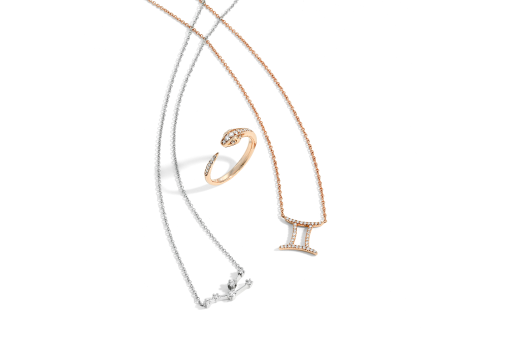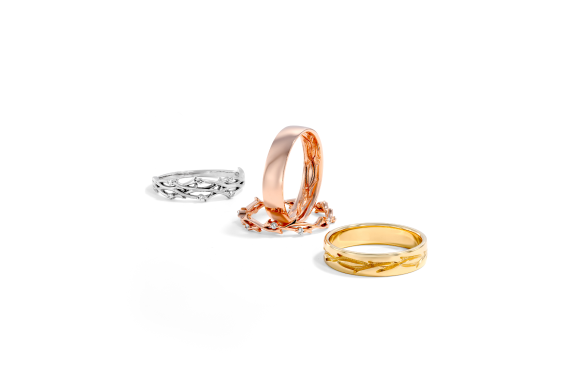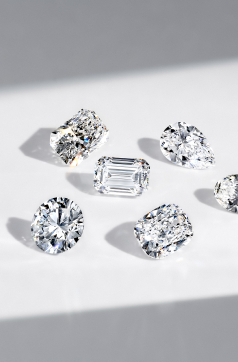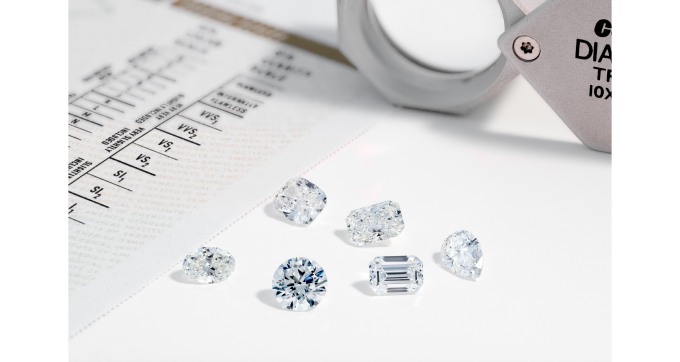Quick Summary
Lab-grown diamonds are capturing hearts with their radiant sparkle, affordability, and ethical appeal. Created using advanced technology, they’re chemically and visually identical to natural diamonds. Compared to mined stones, they cost less, carry fewer environmental and ethical concerns, and offer greater availability. While they may not hold resale value the same way, their beauty and meaning remain just as powerful. For couples seeking a modern, responsible choice, lab-grown diamonds bring elegance without compromise. If you're wondering are lab-grown diamonds worth it, the answer is clear: they absolutely are.
There’s a new spark in the air, and it’s changing the way people fall in love with diamonds. Lab-grown diamonds have stepped into the spotlight, dazzling couples with their beauty and brilliance: according to The Knot, 52% of couples surveyed in 2024 had a lab-grown diamond in their engagement ring. But as they continue to rise in popularity, the same questions keep coming up: Are lab-grown diamonds worth it? Are they just as beautiful and meaningful as their natural counterparts?
The answer is a resounding YES. From their graceful sparkle to their sustainability and affordable price point, these diamonds offer something fresh, responsible, and unforgettable. In this guide, we’ll explain what makes lab-grown diamonds so special, how they compare to natural ones, and why they’ve captured the attention of couples everywhere. If you’ve been dreaming of the perfect stone, now is the time to look at what lab-grown diamonds can offer.
What Are Lab Grown Diamonds?
Lab-grown diamonds are created through science, but their beauty is anything but clinical. These beautiful stones are formed using advanced methods that mirror the natural conditions deep beneath the Earth, namely heat, pressure, and carbon. The result is a diamond that sparkles with the same fire and brilliance as one that took millions of years to form underground.
Two techniques make this magic possible: CVD (chemical vapor deposition) and HPHT (high-pressure, high-temperature). Both approaches use cutting-edge tools to create a diamond that’s chemically, physically, and visually identical to mined diamonds. In fact, the Federal Trade Commission officially recognizes lab-grown diamonds as real diamonds, so when you buy one, you are indeed getting the ‘real thing.’
How Are Lab-Grown Diamonds Certified?
The Gemological Institute of America (GIA) recently made a major change to how it grades lab-grown diamonds. Starting later in 2025, the GIA will no longer issue full 4Cs grades (cut, color, clarity, and carat) for lab-created stones. Instead, its reports will offer broader quality categories: premium, standard, or no designation at all if the diamond doesn’t meet minimum thresholds.
This move reflects a growing trend in the industry. Most lab-grown diamonds already fall into a narrow range of high color and clarity grades, making detailed 4Cs grading less useful for buyers. Under the new system, GIA will still confirm that a diamond is lab-grown and evaluate its overall characteristics, but without the traditional letter or number scores. The goal is to improve clarity for consumers while distinguishing lab-grown diamonds from natural ones, which will continue to receive full 4Cs reports. Existing GIA lab-grown diamond reports remain valid and recognized.
The Pros and Cons of Lab-Grown Diamonds
Lab-grown diamonds have captured attention with their undeniable sparkle and modern appeal, but like any major purchase, they come with their own set of trade-offs. From cost and ethics to rarity and resale, here’s how lab-grown diamonds truly compare.
Pros of Lab-Grown Diamonds
-
Cost: One of the most attractive parts of choosing a lab-grown diamond is the price. These diamonds cost 60 to 85% less than mined diamonds of the same size and quality, letting you choose a larger carat or higher cut without going over budget.
Keyzar Lab Diamonds -
Environmental Impact: Lab-grown diamonds are created in controlled settings that generally use fewer natural resources than mining. Some producers even power their operations with renewable energy, making the sparkle feel a little lighter on the planet.
-
Ethical Considerations: Choosing a lab-grown diamond means avoiding the human rights issues often linked to mining. There are no excavation sites, no displacement of communities, and no need to question how your stone was sourced.
-
Availability: Lab-grown diamonds are created in labs, they can be made on demand in a wide range of styles and sizes. This opens the door to more customization, more freedom, and fewer compromises.
Cons of Lab-Grown Diamonds
-
Resale Value: Lab-grown diamonds may not hold their price once purchased. Unlike natural diamonds, which may retain or increase in value over time, lab-grown stones may depreciate more quickly.
-
Perceived Lack of Rarity: Some people still view natural diamonds as more romantic due to tradition. While that view is shifting fast, especially among younger couples, it remains a factor in how some people assign meaning to a stone.
Comparing Lab Grown Diamonds vs. Natural Diamonds
Lab-grown and natural diamonds may look the same at first glance, but they’re different on multiple levels. When you’re deciding between the two, it helps to compare them side by side, from price to impact to long-term value.
-
Supply and Availability: Because they can be grown on demand, lab diamonds are relatively easy to find and afford. Mined diamonds, in contrast, are harder to come by, often limited by geography, extraction costs, and availability.
-
Price: Lab-grown diamonds offer the look and feel of luxury without the high markup that often comes with natural stones. They also cost a lot less than mined diamonds with similar attributes. That difference can mean the ability to upgrade the size, choose a more expensive setting, or put your savings toward other dreams, without giving up sparkle or quality.
-
Structure and Brilliance: On a molecular level, lab-grown and natural diamonds are identical. Both are composed of crystal structures made from pure carbon atoms, giving them equal brilliance, hardness, and fire.
The top one is a 3.33 carat Oval D VVS1 Lab Diamond and the bottom one is a 3.5 carat Oval D SI1 Natural Diamond -
Ethics and Environmental Impact: While some mined diamonds come from responsible sources, it can be hard to trace their origin with full certainty. Lab-grown diamonds offer a cleaner path, both in conscience and production, especially when made with renewable energy and strict oversight.
-
Value Retention: Natural diamonds have long held their place as heirlooms, partly because they tend to keep their value over time. While lab diamonds offer beauty and affordability upfront, they aren’t ideal if you’re looking at your ring as a long-term investment piece.
The choice between lab-grown and natural diamonds depends on what matters most to you. If you’re drawn to timeless tradition and long-term value, a mined diamond may feel like the right fit. But if your heart leans toward beauty, ethics, and a smart price, lab-grown diamonds offer a modern alternative that doesn’t ask you to compromise on brilliance or meaning.
Lab Grown Diamonds: Why They Are Right for You
Lab-grown diamonds aren’t a trend. They’re a reflection of what people value now: beauty, ethics, and smart choices that don’t compromise on quality. They offer everything you could want in a diamond with the added comfort of knowing where it came from and how it was made. If you’re searching for something stunning, heartfelt, and thoughtfully chosen, a lab-grown diamond brings all of that to the table.
At Keyzar, we offer lab diamonds that let you dream bigger without stretching your budget. And when you slip it on, you’ll know it carries a story that reflects love - for the planet, for your partner, and for the future you’re building together. Shop now!






